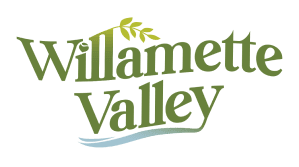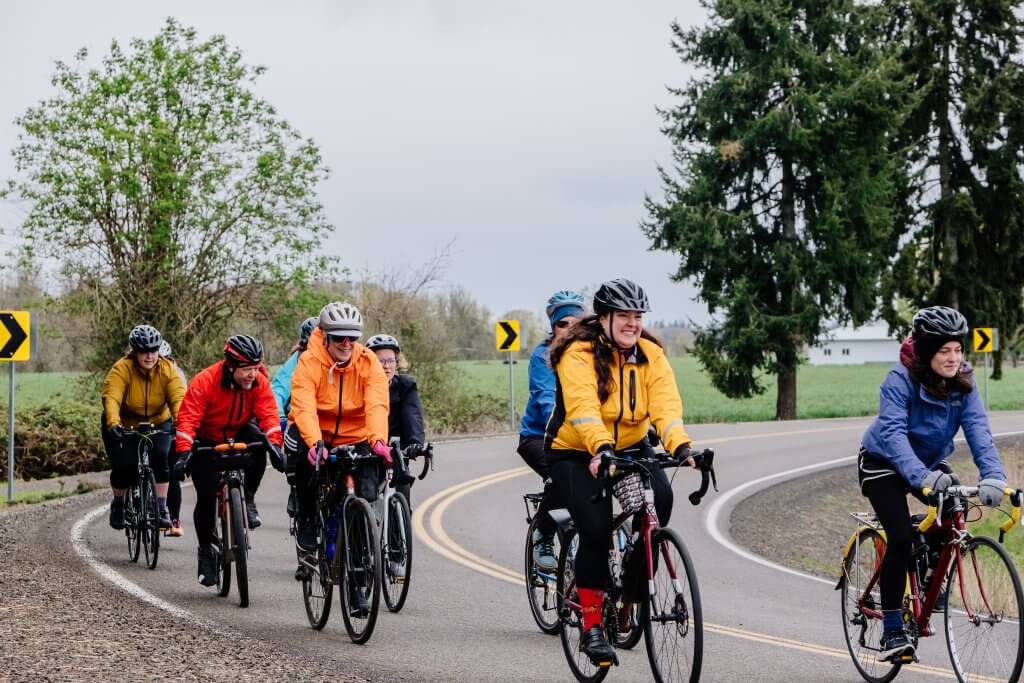
Growing up in Texas, Marley Blonsky rode her bike around the neighborhood and to school-but, like so many students, let the bike collect dust when she entered high school and started driving.
Her childhood love affair with cycling faded into memory, only to be rekindled in 2014. Blonsky recalls going through a divorce, moving to the hip Capitol Hill neighborhood in Seattle, and taking the bus to and from work each day. What should have been a stress-free way to bypass traffic soon became a slog. "It was less than two miles, but it would take 45 minutes," she says of her daily commute. "I kept seeing all these people on bikes whizzing by, and I was like, 'Okay, I want to do that.'"

It was a decision that led Blonsky into a career (and a movement) she never could have envisioned. Nearly a decade later, Blonsky is co-leader of All Bodies on Bikes, an advocacy group that works to create, nurture, and grow a size-inclusive cycling community-whether through group rides or in corporate boardrooms.
Along with co-founder Kailey Kornhauser, the cyclists are spreading a message that riding one's bike doesn't have to be about racing to the finish line or shedding pounds; it can be about riding for the joy of it-no matter the size of the cyclist. And judging by the group's 13,000 Instagram followers, it's a message that's clearly found a home.
Not that Blonsky started cycling for the joy of it herself. Not by a long shot.

Blonsky, who identifies as a fat cyclist, started commuting via bike soon after her lightbulb moment on the bus-but quickly ran into issues that made cycling far more complicated than she anticipated.
She had trouble finding a raincoat in her size (a must-have for the notoriously wet Seattle climate), noticed that protected bike lanes were few and far between, and struggled with broken equipment-the byproduct of an industry that didn't take time to engage with cyclists of all sizes. "I was breaking parts of my bike because I weighed too much for them, and nobody would tell me honestly, 'Hey, you need a stronger bike, or this is what you need to do as a bigger person,'" she says.
She began blogging about her experiences and speaking at local bike clubs; along the way, she was slowly developing a passion for cycling-not just as an alternative to traffic-choked commutes, but as something more fulfilling.
Blonsky appreciated the flexibility of biking-being able to throw her bike on the bus or light rail if she didn't want to ride all the way home, or cycling through a park, hearing music, and being able to stop and watch if she so desired. In time, her relationship with cycling changed. "You don't have to go fast-and you don't have to go far-to ride your bike."

It was in 2018 that the movement behind All Bodies on Bikes began to take shape. That summer, Blonsky noticed an Instagram post from ??cyclist Kailey Kornhauser, who was riding across Alaska-but didn't have a raincoat. "I was like, 'Okay, we need to talk,'" she says of that fateful moment.
Right away, Blonsky knew she had found a kindred spirit in Kornhauser. "It's easy to connect with somebody when you've both been left behind," she says.
The two started chatting online and noticed their voices were missing from the broader discourse around diversity, equity, and inclusion in the cycling world. Blonsky, for instance, led a workshop at what was then called the WTF Bikexplorers summit-and while she felt encouraged about how to make women, trans, and non-binary cyclists feel more welcome, she felt something was missing: "Nobody was talking about size."
Following that summit, and feeling empowered by her new connection to Kornhauser, Blonsky saw an opportunity to expand the discussion around who could (and should) ride bikes. "I realized that even in this community that was focused on inclusion, there was still so much space for talking about size inclusion," she recalls. "It was kind of the proverbial elephant in the room. So I just saw the gap and leapt into it."
The duo gave presentations and consulted with brands and ride leaders on how to be more welcoming-such as what kind of language to use and how to shift the narrative from sport cycling or weight loss and toward the thrill of cycling.
And as they worked together more closely, Blonsky developed an appreciation for all that Kornhauser brought to the table and how they complemented each other. "She's super organized and a really good communicator," Blonsky says. "She has her head on straight, and she's really humble. She's a really grounding presence."
Before long, Shimano-an international company that manufactures cycling components-approached the duo and wanted to make a short film about their work and what they hoped to accomplish. All Bodies on Bikes was officially born.
The 13-minute documentary, simply titled "All Bodies on Bikes", premiered on YouTube in March 2021. It offered a bit of background on how Blonsky and Kornhauser met and how they fit into the larger discussion around cycling-and followed the duo on a bikepacking adventure along the Corvallis-to-the-Sea Trail.
The film, which has been viewed nearly a quarter-million times since debuting, helped Blonsky and Kornhauser find a new audience and build on their efforts by leading rides, talking with companies and brands, and broader community-building. So powerful was the All Bodies on Bikes message, it allowed Blonsky to leave her corporate job and devote her energy full-time to the growing movement in August 2021.
Blonsky says the group (and its movement around body positivity) has been welcomed with open arms. But it hasn't been without challenges.
Blonsky occasionally encounters someone who assumes cycling is about weight loss, improving one's fitness, or earning their post-ride meal. And while that might be the case for some in the All Bodies on Bikes sphere, that's not what the movement is about. "We're not talking about weight loss," she says. "I'm going to use the word 'fat' and not in a derogatory way. It's really reframing it, talking about joyful movement, and being very forthcoming: I don't ride my bike to lose weight. If that happens, okay. But I like my body the way it is."
It's a message Blonsky and Kornhauser hope to continue sharing online-the All Bodies on Bikes Instagram account boasts more than 13,000 followers-and by creating regional chapters and hosting a variety of events.

Recently, in April 2022, the duo led a ride, coordinated with the Willamette Valley Visitors Association and The Independence Hotel, around the Willamette Valley. Mother Nature didn't exactly cooperate-the weather was cold, windy, and threatening rain the entire time-but about 25 cyclists joined the 20-mile ride, which departed from Independence and included a trip on the Buena Vista Ferry. A planned mountain biking trip for the next day fell through when late-season snow created unsafe conditions in the Oregon Coast Range foothills.
Blonsky hopes the event, and others like them, helps riders feel seen, welcome, and accepted in the cycling community-feelings that have eluded would-be cyclists for decades now. They're the kind of feelings that inspire Blonsky to think back on those start-and-stop bus rides-and how she started this journey in the first place: "I realized, 'Hey, this is a place where I can make a difference,'" she says.